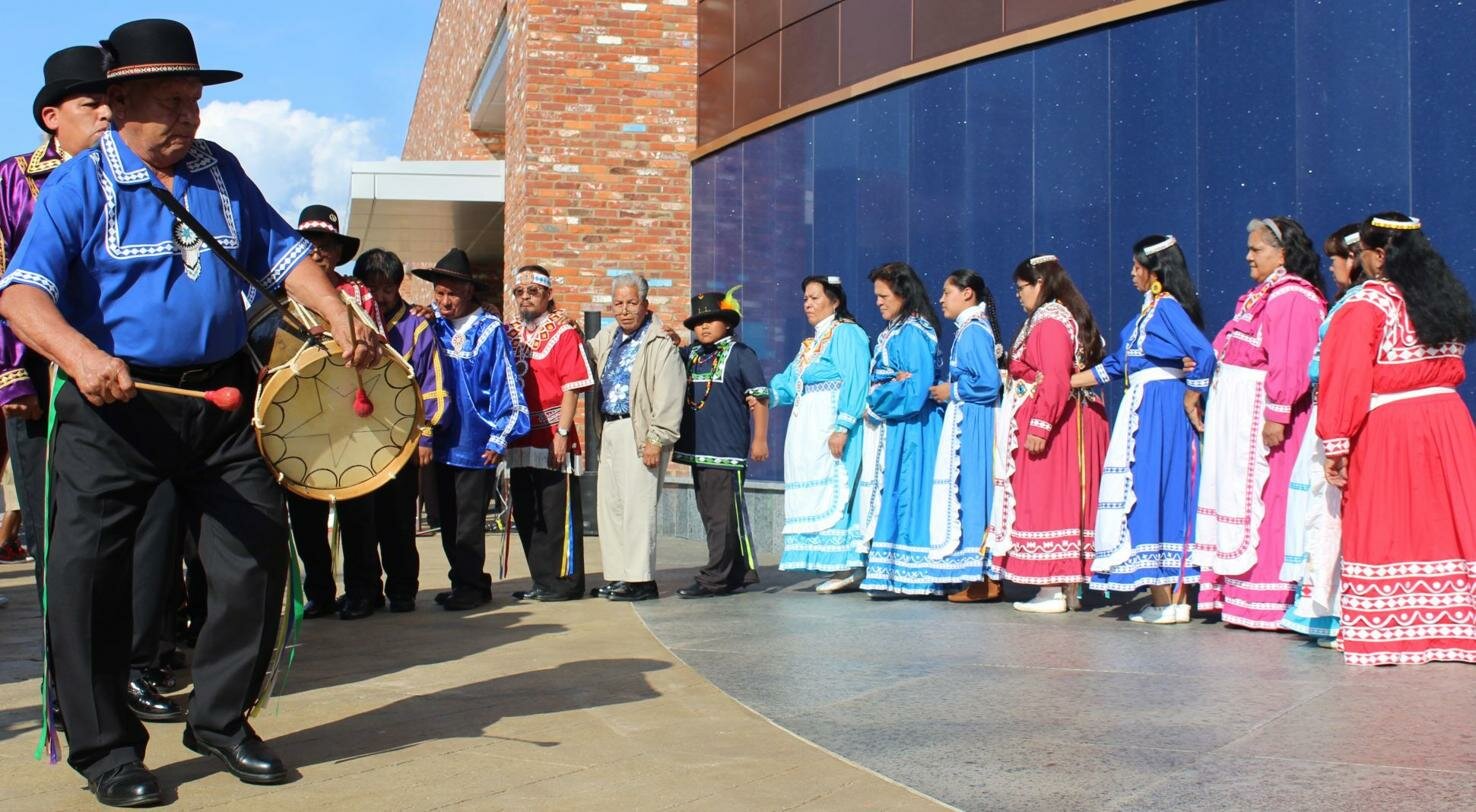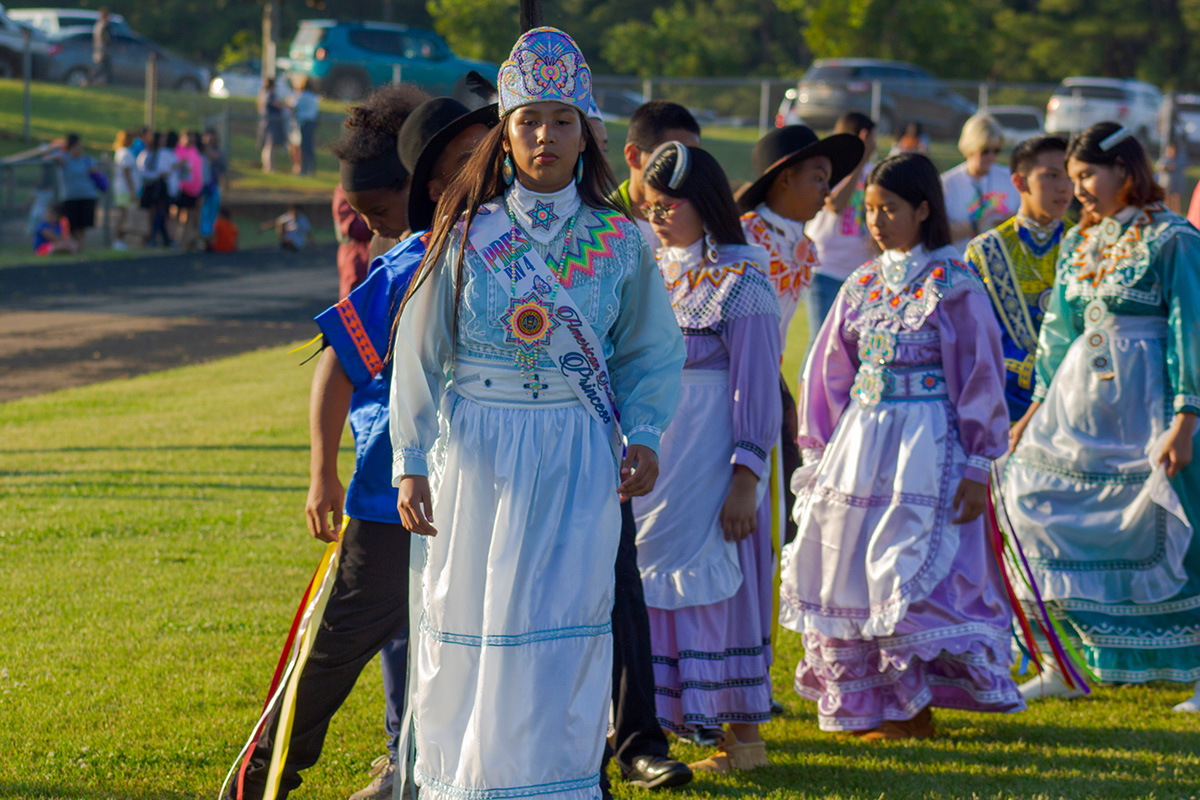
Echoes of the Homeland: The Enduring Harmony of Choctaw Traditional Music
In the heart of Oklahoma, amidst rolling plains and a vibrant cultural landscape, a sound echoes through generations – the traditional music of the Choctaw Nation. More than just melodies and rhythms, this music is a living repository of history, a vessel for language, and a profound expression of identity for a people who have faced immense challenges and shown extraordinary resilience. It is a testament to the enduring spirit of the Chahta people, whose songs carry the whispers of ancestors and the heartbeat of a nation.
For the Choctaw, one of the Five Civilized Tribes, music is interwoven with every facet of life – spiritual ceremonies, social gatherings, competitive games, and daily routines. It’s a tradition passed down not through written scores, but through oral transmission, from elder to youth, from one generation of singers and dancers to the next. This oral tradition ensures that each song, each vocable, each drumbeat carries the weight of collective memory and the wisdom of ages.

"Our music is our history," explains Dr. Ian Thompson, a cultural preservationist with the Choctaw Nation of Oklahoma. "It tells the stories that textbooks can’t. It carries the emotions of the Trail of Tears, the joy of community, the strength of our spirit. When we sing, we are not just making sound; we are actively remembering, actively reaffirming who we are as Choctaw people."
The Soundscape: Instruments and Vocals
The traditional Choctaw musical landscape is characterized by its simplicity of instrumentation and the profound power of the human voice. The most prominent instrument, and arguably the most sacred, is the water drum. Unlike many other drums, the Choctaw water drum is typically made from a clay pot, iron kettle, or even a hollowed-out gourd, partially filled with water. A deerskin or rawhide head is stretched taut over the opening and secured. The water inside gives the drum a unique, resonant, and somewhat haunting quality, often described as a "singing" or "talking" drum.
"The water drum isn’t just an instrument; it’s a living entity," a Choctaw elder once shared, emphasizing its spiritual significance. "The water represents life, the skin represents the animal, and the sound connects us to the Creator and to our land. It’s the heartbeat of our people." The rhythmic patterns played on the water drum are often complex and syncopated, providing the foundational pulse for many songs.
Accompanying the drum are rattles, primarily made from gourds or turtle shells, filled with pebbles or seeds. These rattles, often tied to the legs of female dancers during stomp dances, create a percussive shushing sound that complements the drum’s deep thrum. Historically, flutes made from cane or bone were also used, though they are less common in contemporary traditional Choctaw music, which prioritizes vocal and percussive elements.
The human voice is paramount. Choctaw traditional songs are often characterized by call-and-response patterns, where a lead singer (or "caller") sings a phrase, and the group responds. The melodies are typically monophonic, focusing on a single melodic line, and often feature vocables – non-lexical syllables that carry emotional weight and rhythmic structure, much like "la-la-la" or "oh-oh-oh" in Western music, but with specific cultural meaning and usage. These vocables are not filler; they are integral to the song’s identity and power, often carrying ancient linguistic fragments or spiritual nuances that transcend direct translation.
The Tapestry of Songs: Purpose and Practice
Choctaw traditional music encompasses a wide array of songs, each serving a distinct purpose within the community:

-
Social Dance Songs (Stomp Dance Songs): These are perhaps the most visible and widely practiced traditional songs today. Central to community gatherings and cultural events, the stomp dance is a communal, spiritual, and social activity. Dancers move in a counter-clockwise circle, led by a male "leader" who calls the songs. The female dancers wear leg rattles, adding to the percussive layers. Stomp dances are not mere entertainment; they are a form of spiritual renewal, community building, and a way to maintain social cohesion. The songs are often lighthearted, celebratory, and sometimes feature playful lyrics or vocables.
-
Stickball Songs: Stickball (Ishtaboli), often called "little brother of war," is a physically demanding and spiritually significant game among Southeastern tribes. Songs associated with stickball are powerful and intense, sung before and during the game to invoke strength, spirit, and even to influence the outcome. They are competitive, often aggressive in tone, and designed to uplift one’s own team while intimidating opponents.
-
Healing Songs: Traditionally sung by healers or spiritual leaders, these songs are used in ceremonies to promote physical and spiritual well-being. They often involve specific rituals and are believed to connect the patient to ancestral spirits and natural forces for healing.
-
Children’s Songs and Lullabies: Passed down through generations, these songs teach language, cultural values, and history in an accessible way to the youngest members of the community. They are gentle, repetitive, and often tell simple stories or describe natural phenomena.
-
War and Hunting Songs: While less commonly performed today in their original context, these historical songs speak to the Choctaw’s martial prowess and their deep connection to the land and its resources. They embody courage, strategy, and respect for nature.
-
Love Songs and Mourning Songs: Expressing the full spectrum of human emotion, these songs provide outlets for personal feelings, reflecting joy, longing, and grief within a cultural framework.
Language and Identity: A Sacred Connection
Perhaps the most crucial role of Choctaw traditional music in the modern era is its function as a vital tool for language preservation. With fewer fluent Choctaw speakers each year, songs become invaluable repositories of the language. Children and adults learn Choctaw words, phrases, and grammatical structures through singing, often without realizing they are engaging in a rigorous language lesson.
"When we sing, we are speaking our ancestors’ language, even if we don’t speak it fluently in daily conversation," says Elder Naomi Lewis, who teaches Choctaw language and culture to youth. "The songs keep the sounds, the rhythm, the very spirit of our language alive. They are a bridge between our past and our future."
Beyond language, the music profoundly reinforces Choctaw identity. In a world of increasing globalization, the unique sounds and practices of Choctaw music serve as a powerful anchor, connecting individuals to their heritage, their community, and a legacy that spans millennia. It offers a sense of belonging, pride, and continuity for a people who have endured forced removal from their ancestral lands (the infamous Trail of Tears) and generations of cultural suppression through assimilation policies like boarding schools. During these periods of immense hardship, music remained a clandestine source of comfort, resistance, and connection to their roots.
Challenges and the Resurgence
The historical traumas inflicted upon Native American communities, including the Choctaw, significantly disrupted the transmission of traditional knowledge, including music. The forced removal in the 1830s, followed by the suppression of Native languages and cultural practices in government-run boarding schools, led to a decline in fluent speakers and a break in the oral tradition. Many songs and their associated knowledge were lost or became known only to a handful of elders.
However, the late 20th and early 21st centuries have witnessed a powerful cultural revitalization movement within the Choctaw Nation. Recognizing the critical importance of their heritage, the Choctaw Nation of Oklahoma, under the leadership of its Cultural Preservation Department, has invested heavily in programs designed to reclaim, preserve, and promote traditional music.
These efforts include:
- Workshops and Classes: Regular classes are held to teach Choctaw language, traditional songs, and the art of making and playing instruments like the water drum and rattles.
- Youth Engagement: Programs specifically target young Choctaw people, encouraging them to learn and perform traditional music, ensuring the tradition continues into future generations.
- Recordings and Documentation: While oral tradition is paramount, some efforts are made to document existing songs through recordings and transcriptions (with careful cultural protocols), creating resources for learning and study.
- Public Performances: Choctaw traditional singers and dancers frequently perform at cultural events, powwows, and educational venues, sharing their heritage with both tribal members and the wider public.
Prominent cultural leaders and musicians like D.G. "Doc" Jones have dedicated their lives to preserving and teaching Choctaw traditional music, becoming a bridge between the elders and the youth. Modern Choctaw artists, while often working in contemporary genres, also draw inspiration from their traditional roots, sometimes incorporating Choctaw language or melodies into their work, further expanding the reach and appreciation of their heritage.
The Future’s Melody
The future of Choctaw traditional music is vibrant and dynamic. It continues to evolve, adapting to modern contexts while maintaining its essential integrity. Young Choctaw people are embracing their musical heritage with enthusiasm, ensuring that the ancient rhythms and melodies will continue to resonate for generations to come.
In a world increasingly seeking authenticity and connection, the traditional music of the Choctaw Nation offers a profound experience – a window into a rich history, a testament to resilience, and a vibrant expression of cultural identity. It is more than just sound; it is the enduring heartbeat of a people, singing their way forward while honoring the echoes of their homeland. The harmony of the Choctaw people, forged in resilience and sustained by spirit, continues to reverberate, a powerful and beautiful song of survival and hope.


